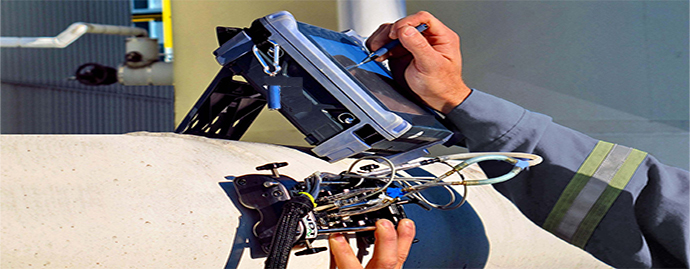| Start Date | End Date | Country | City |
|---|

 +966 920007771
+966 920007771

Objectives
- The level III course review the basic principles developed at level II and then goes on to discuss the advantages and limitations of Various Visual Testing Procedures. A great deal of importance is placed on the Inspection & Evaluation of indications arising from both primary and secondary processing discontinuities.
Outlines
1.0 Principles / Theory
1.1. Vision and Light
- Physiology of sight
- Visual acuity
- Visual angle and distance
- Color vision
- Physics and measurement of light
1.2 Environment Factors
- Lighting
- Cleanliness
- Distance
- Air contamination
1.3 Test Object characteristics
- Texture
- Color
- Cleanliness
- Geometry
2.0 Equipment Accessories
2.1 Magnifiers
2.2 Mirrors
2.3 Dimensional
- Linear measurement
- Micrometers/calipers
- Optical comparators
- Dial indicators
- Gages
2.4 Borescopes
- Rigid
- Fiber optic
- Special Purpose
2.5 Video systems (robotics)
- Photoelectric devices
- Electron microscopy
- Video borescopes
- Video imaging/resolution/image processing (enhancement)
- Charge coupled devices (CCD’s)
2.6 Automated systems
- Lighting techniques
- Optical filtering
- Image sensors
- Signal processing
2.7 Video Technologies
2.8 Machine Vision
2.9 Replication
2.10 Temperature sensitive markers and surface comparators
2.11 Chemical aids
2.12 Photography
2.13 Eye
3.0 Technique / Calibration
3.1 Diagrams and Drawings
3.2 Raw materials
3.2.1 Ingots
- Blooms/billets/slabs
3.3 Primary Process materials
- Plates/sheets
- Forgings
- Castings
- Bars
- Tubing
- Extrusions
- Wire
3.4 Joining Processes
- Joint configuration
- Welding
- Brazing
- Soldering
- Bonding
3.5 Fabricated components
- Pressure vessels
- Pumps
- Valves
- Fasteners
- Piping systems
3.6 In-service materials
- Wear
- Corrosion / erosion
- Microscopy
3.7 Coatings
- Paint
- Insulation
- Catholic protection (conversion coatings)
- Anodizing
3.8 Other applications
- Ceramics
- Composites
- Glasses
- Plastics
- Electronics
- Bearings
3.9 Requirements
- Codes
- Standards
- Specifications
- Techniques (direct, indirect, video, etc.)
- Personnel qualification and certification
4.0 Interpretation / Evaluation
4.1 Equipment variables affecting test results including type and intensity of light
4.2 Material variables affecting test results including the variations of surface finish
4.3 Discontinuity variables affecting test results
4.4 Determination of dimensions (i.e., depth, width, length, etc.)
4.5 Sampling/scanning procedure variables affecting test results
4.6 Process for reporting visual discontinuities
4.7 Personnel (human factors) variables affecting test results
4.8 Detection
- Interpretation
- Evaluation
5.0 Procedures and Documentation
5.1 Hard copy – general applications
- Mineral based materials
- Organic based materials
- Composite materials
- Metallic materials
5.2 Photography – specific applications
- Metal joining processes
- Pressure vessels
- Pumps
- Valves
- Bolting
- Castings
- Forgings
- Extrusions
- Microcircuits
5.3 Audio/Video – requirements
- Codes (AWS, ASME, etc.)
- Standards (MIL-STD, NAVSEA, etc.)
- Specifications
- Procedures (Level III exam specific)
5.4 Electronic and Magnetic media
5.5 Personnel qualification and certification
6.0 Safety and Health
6.1 Electrical shock
6.2 Mechanical hazards
6.3 Lighting hazards physiological deleterious effects of light
6.4 Chemicals contamination
6.5 Radioactive materials
6.6 Explosive environments
Who Should Attend
- The course is designed for anyone who is interested in satisfying the certification requirements for Visual Testing Level III certification or who needs a thorough knowledge and practical experience of Visual Testing Techniques.
Duration
5 Days










